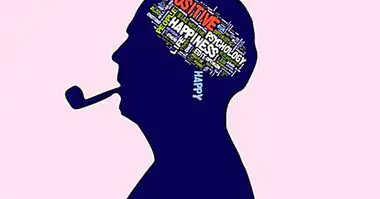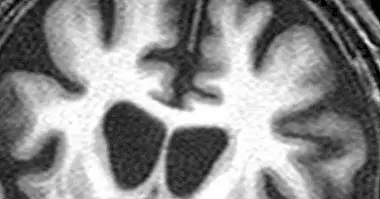Intervention in phobias: the technique of exposure
The so-called exposure techniques are defined as the set of psychological procedures and behavioral by which a person can learn to cope with those situations that produce an intense anxiogenic discomfort.
This type of phenomena are usually related to a certain object or situation feared, of which the person tries to flee or avoid at all costs, although this is aware of the irrational and disproportionate of his reaction. The intense aversion suffered or phobia can be derived either from internal stimuli, for example being afraid of contracting a disease, or external, such as the fear of flying by plane.
Although there are many types of exposure, which are classified according to the place where it is performed (live exposure, exposure in imagination, exhibition in reality vitual, etc.), of people who participate in it (self-exposure, exhibition group, assisted exhibition, etc.), of how the gradation of the difficulty of the situations to be faced is established (flood, gradual exposure, etc.). Let's see what the two most common modalities consist of: In vivo exposure and imagination exposure .
- You may be interested: "What is systematic desensitization and how does it work?"
Characteristics of the exposure technique
The ultimate purpose of the technique is provide the subject with various cognitive-behavioral resources so that he is able to put them into practice in real anxiogenic situations and this allows him to remain in it without emitting the avoidance response. These resources become cognitive restructuring techniques on experienced fears, training in self-instructions, breathing control techniques, relaxation techniques or modeling techniques and behavioral testing, mainly.
Exposure techniques allow learning to reduce the association between stimuli that generate anxiety and fear, and negative emotional reactions, also facilitate learning in an alternative way in the reaction to the initially anxiogenic stimuli characteristic of phobias .
Thus, psychological work is done to avoid cognitively anticipating the future development of the feared situation without thinking about the negative consequences and controlling the emotional reactions and the impulses themselves.
The hierarchy
One of the fundamental elements of the exhibition intervention, both in vivo and in imagination, is the prior elaboration of a hierarchy of exposure. In it, all the situations that generate anxiety and annoyance to the individual are registered.and ordered by a score in USAs, or Subjective Anxiety Units (usually 0-10 or 0-100), which indicates the level of perceived anxiogenic discomfort. Thus, a list of all the dreaded situations is obtained from less to greater difficulty of coping.
A relevant aspect is to find a balance in the gradation of the dreaded situations indicated. It is likely that the low-graded exposures have less acceptance by the subject and also higher dropout rate, although possibly faster results are achieved.
By cons, Excessive exposure can lead to a feeling of personal discouragement , seeing the individual that his progress is excessively slow. For this reason, it seems more effective to begin by exposing oneself to situations of low anxiety level (which have a high probability of coping success) until reaching those situations in which the person tends to avoid due to the high level of anxiety generated by them. (for example those in which you have suffered a panic attack before).
In the progress to move from the first to the second should be considered aspects such as the medical and psychological condition that the individual presents, the time that can be used for exposure and the degree of habituation of this respect of the technique. Thus, the hierarchy can be modified as progress is made in its realization , also taking into account the sensations experienced by the subject in each exhibition and the personal or environmental factors that influence the applied coping.
At the methodological level, Bados (2011) presents the following general guidelines as indications to follow in the application of in vivo exposure techniques:
- You must remain in the situation until the person experiences a reduction in anxiety (40-50 USAs) without expressing wishes to avoid the situation.
- The USAs level should be checked every 5-10 minutes. If the duration has been short, exposure must be repeated in order to experience a marked reduction in anxiety.
- The time dedicated to coping with the situation It should oscillate between 1 and 2 hours daily before moving on to the next situation.
- Each element of the hierarchy must be repeated until getting two exposures in a row with a level of anxiety between zero and slight.
- The periodicity of the sessions It should be between 3-4 days a week.
- After the end of the exhibition the subject must leave the situation in order to avoid carrying out automatic reassurance checks.
The exhibition in imagination in phobias
Exposure in imagination involves imagining in the most real way possible the experience of situations or feared stimuli that cause intense discomfort to the subject. This technique has a lower level of effectiveness than in vivo exposure, so usually both are combined.
Among the factors that cause a lower result of therapeutic success are the difficulty of applying strategies of imagination exposure to real situations (generalization of the stimulus) or the problems derived from how to assess whether the person has a good capacity to imagine situations feared indicated by the hierarchy.
However, exposure in imagination can be useful when:
- The cost of the live exposure is not acceptable or it can not be scheduled in advance.
- Upon the occurrence of an incident suffered by the subject in an in vivo exhibition that it prevents him from being able to face a new exhibition again in real context.
- The person shows reservations and an excessive fear to start the live exposure.
- As an alternative to in vivo exposure in situations where there is lack of compliance or difficulties in the habituation to the technique in real context.
Imagination capacity assessment
As indicated above, the competence available to the person will be a crucial element when assessing the possibility of applying this type of variant of the exposure technique.
In case of presenting limitations related to said ability, prior to the application of the steps listed in the exposure hierarchy, the subject must be evaluated and trained in this type of procedures.
For this, the therapist proposes a series of visualization exercises in which it presents a series of scenes to the patient, and it is indicated and guided on the elements that appear in it for approximately one minute. Subsequently, the quality and sharpness of the visualization exercised by the subject is evaluated, as well as the factors that have hindered the procedure.
In relation to this last, Bados (2005) presents a list of possible problems related to the difficulty in the evocation of imagined scenes:
1. Diffuse image
If the reproduction of the scene is vague , it is recommended to do a training in imagination starting with neutral or pleasing scenes, although it is also possible to enrich the description of the scene with important details and reactions of the client that have been omitted.
2. Temporarily limited imagination
The subject is not able to maintain the scene, which can be linked to the desire to escape from the feared situation. In this case, it is worth remembering the justification of the procedure and the need to expose oneself until reaching a tolerable degree of habituation. The client can also be asked to verbalize aloud what he imagines or to elaborate a less disturbing scene as a previous step.
3. Little detail
Lack of involvement in the scene by the subject. It can be proposed to enrich the scene with additional descriptive details, with the sensations, cognitions and behaviors of the client and with the consequences that he fears.
4. Manipulation of the imagined downward
Modification of the scene that mitigates anxiety. The subject can imagine situations quite different from those described. So, they can Diminish the aversion of a scene by incorporating protective elements (a small light in a dark room) or eliminating aversive elements (empty subway car instead of crowded).
In these cases, the importance of experiencing anxiety is remembered to get the final habituation of it and emphasizes making a description of the scenes much more specific.
5. Manipulation of the imagined upwards
Modification of the scene that increases anxiety. The patient can increase the anxiety potential of a scene adding aversive elements or removing protective elements. Possible solutions to this are to emphasize the importance of imagining only what is being asked or to indicate to the person who verbalizes out loud what he is imagining.
6. Ensimismamiento
The subject perseveres on the scene despite the indication of the end of the exhibition. In this situation it is useful to propose to the individual to relax the muscles of the eyes or to move or rotate the eyes.
Bibliographic references:
- Bados, A. and Grau, E. G. (2011). Exposure techniques. Dipòsit Digital of the Universitat de Barcelona: Barcelona.



















